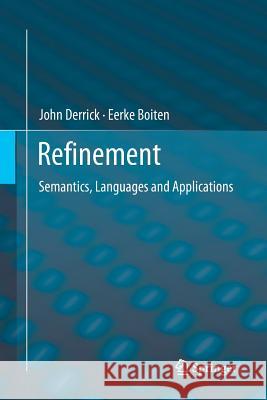Refinement: Semantics, Languages and Applications » książka
topmenu
Refinement: Semantics, Languages and Applications
ISBN-13: 9783030064976 / Angielski / Miękka / 2019 / 269 str.
Kategorie:
Kategorie BISAC:
Wydawca:
Springer
Język:
Angielski
ISBN-13:
9783030064976
Rok wydania:
2019
Dostępne języki:
Ilość stron:
269
Waga:
0.41 kg
Wymiary:
23.39 x 15.6 x 1.55
Oprawa:
Miękka
Dodatkowe informacje:
Wydanie ilustrowane











